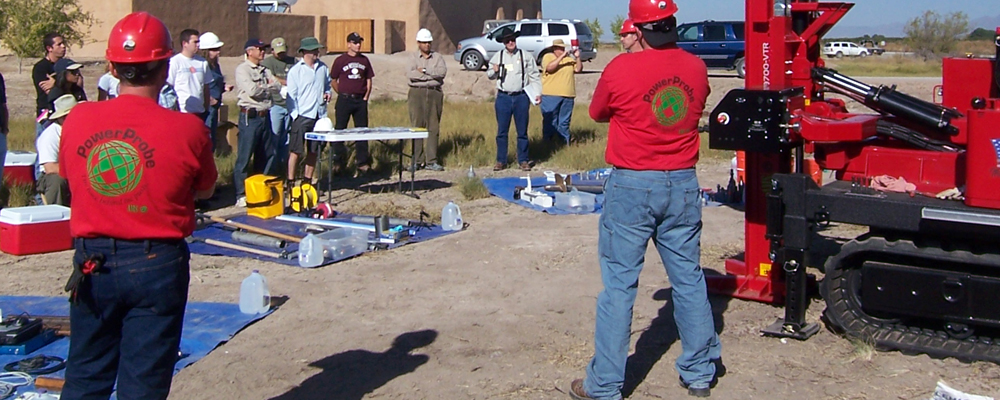The key to success of any ground-water monitoring program
 |
| Students Learn How to Correctly Describe Soil Samples Collected During Well Installation and How to Use Munsell Charts to Determine Sample Color |
is the effective placement, drilling, design, construction and development of ground-water monitoring wells. Ground-water monitoring wells and monitoring well networks must be designed to monitor site-specific compounds of interest and site-specific hydrogeologic conditions, so that ground-water sampling teams will be able to collect representative samples for analysis.
This 2 1/2-day field course examines in detail all elements of monitoring well and monitoring network design and well placement, including site-specific geology, hydrogeology and geochemistry; environmental drilling methods; and well design, construction and development per ASTM Standard Practices. Time is devoted to discussing design and use of small-diameter wells that can be installed using direct-push, sonic and hollow-stem auger drilling methods. These wells are now considered a viable alternative to traditional monitoring wells installed using mud rotary drilling.
This course features one half-day field session that covers site characterization methods, including discrete and continuous soil sampling, and discrete ground-water sampling, installation of a small-diameter well, and demonstration of the use of a multi-level monitoring system.
Registration Fee for 2014: $1295.00 US per person (for NM courses only, mandatory NM Gross Receipts Tax of 7.6% must be added)











